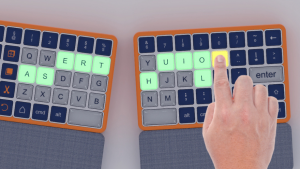
A small implant, the size of a matchstick, has been engineered to allow paralysed people to walk with the power of thought. Developed by a cross-department team at the University of Melbourne, the stentrode device offers mobility to the paralysed by harnessing technology that taps into the part of the brain that controls the body’s movement.
Omitting the need for complicated surgery, the stentrode is implanted into the brain with a minimally invasive procedure that requires inserting the object into a blood vessel next to the motor cortex. From this position, the stentrode is able to pick up brain activity that normally controls the body’s muscles. This information is translated into commands that will power mobility-assist equipment like wheelchairs, prosthetics or exoskeletons.
This intricate process places great importance on the design and dimensions of the device. A lot of work and research went into creating a device only three millimetres wide and flexible enough to fit into a tiny blood vessel without causing any damage.
Having already completed its pre-clinical trials with success, the University of Melbourne team plans to assess the efficiency of the device in a trial with a group of paraplegic patients in 2017. If the clinical trial succeeds, the technology will be commercially available in as little as six years.






